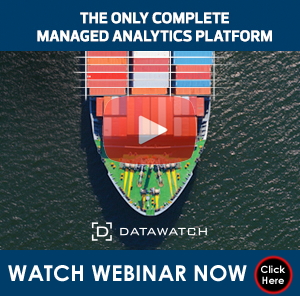Strahan Wilson, CFO at sandwich chain EAT, explains how predictive analytics has helped him keep the shelves stocked, the customers happy and the shops fully staffed during peak periods.
 Historically, predictive analysis has been the preserve of the major supermarkets. The huge investment in on-premise software systems and the need to employ specialist statisticians to evolve the models in response to business changes has kept it out of reach of smaller retailers.
Historically, predictive analysis has been the preserve of the major supermarkets. The huge investment in on-premise software systems and the need to employ specialist statisticians to evolve the models in response to business changes has kept it out of reach of smaller retailers.
Thankfully, innovative, cloud-based platform-as-a-service (PaaS) solutions are providing simple yet equally powerful ways of performing predictive analytics at an affordable price – without the need for in-house specialist resource. This has opened up business intelligence to all.
The advent of the cloud and software being delivered as a service – rather than shrink wrapped boxes of yore – has meant that trialling software is now less risky and much more affordable.
The cloud opens up the predictive analytics playground gates to all sizes of company. Gone are the days where hefty capital expenditure was required to buy the hardware to run data analytics.
Using a ‘pay for what you use’ software-as-a-service (SaaS) model makes cutting-edge solutions accessible and manageable on a operational-expenditure basis, which is a great leveller for businesses wanting to compete with larger players.Knowledge-as-a-service
New cloud-based solutions not only remove the need to spend money on initial hardware, they also remove the necessary requirement to have the skilled professionals available to manage and maintain an analytics programme.
EAT wanted its analytics solution implemented and managed without having to understand what was going on under the hood. A strong vendor partnership and a robust system-as-a-service option allows us to focus on what we’re good at – creating exciting, quality food to go and keeping our customers happy – without having to worry about the technical stuff.
The skills for predictive forecasting are exceptionally specific and very technical. We didn’t want to have to build a whole department to manage our forecasting programme and we certainly didn’t want to hire expensive and elusive data scientists to run it.
For it to work for us, we had to find a way to outsource both the software and its ongoing management. In Blue Yonder, with its roots in CERN, we are not only working with data scientists who have been on the cutting edge of theoretical physics, but by clearly defining our success KPIs we don’t need to worry about how the model is being managed and maintained. All we see is improved waste and better availability.
Using predictive analytics, we have been successfully evaluating supply-and-demand metrics to ensure that, when customers walk in on their lunch break, they can find exactly what they want and we don’t lose profits from empty shelves or excessive waste in overstock.
The result of the trial has already shown a 14% waste reduction in the pilot stores. The technology takes into account the existing sales data from EAT, and adds environmental factors such as public holidays, the weather and geographical location to give a much more accurate forecast of which shops need what sandwiches and when.
To get the project started, we initially provided two years of our historical data, so that our outsourced data experts could evaluate this and make informed predictions for demand and sales patterns moving forwards.
This excerpt is from Information-Age. To view the whole article click here.